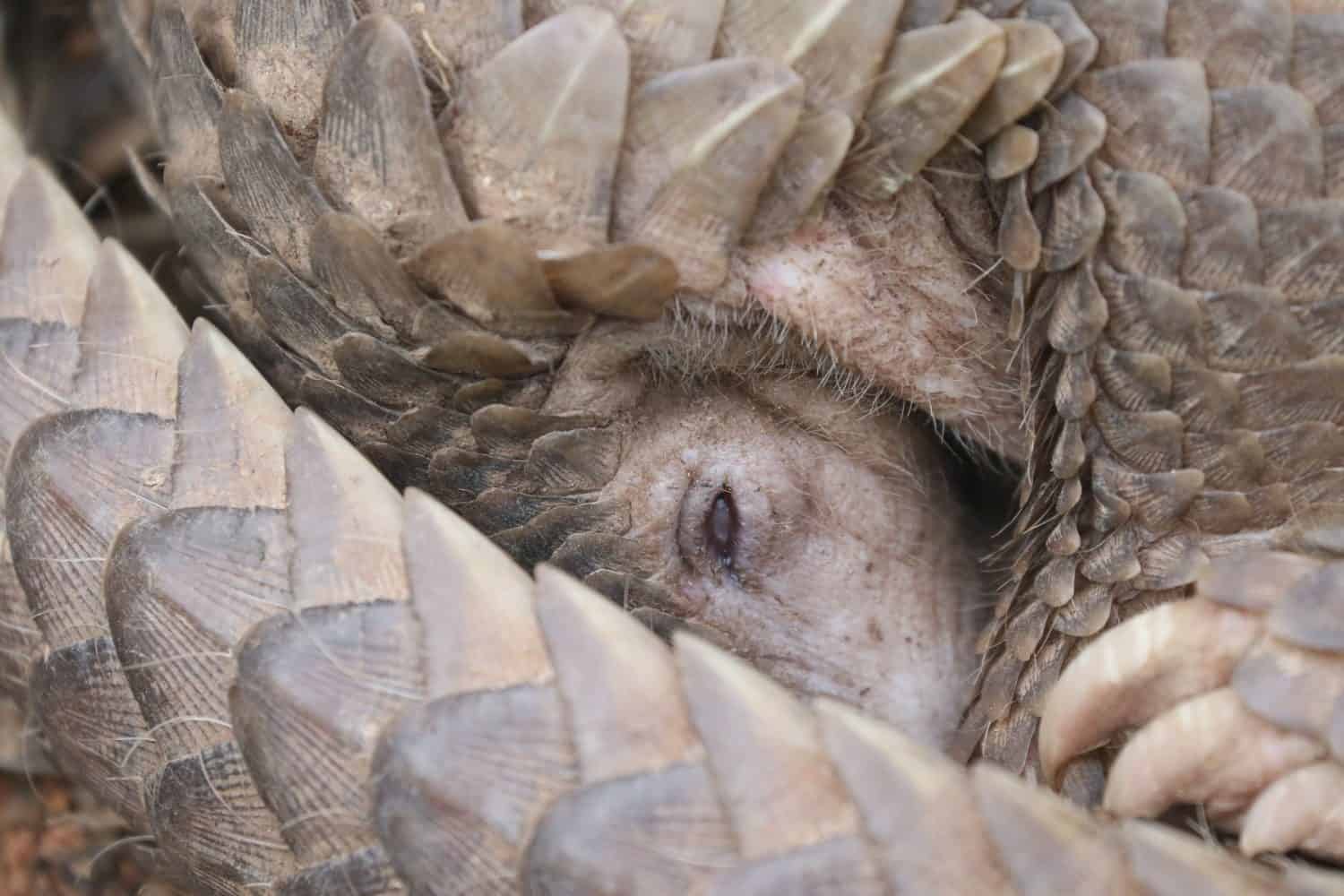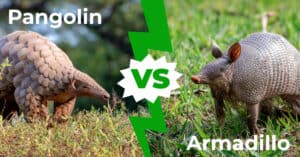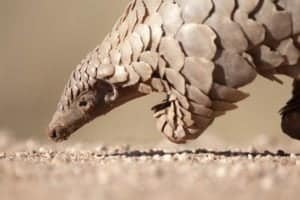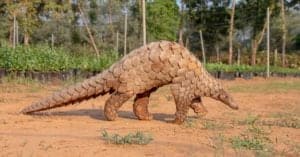In the wilderness of Africa and Southeast Asia, lies an animal straight out of mythology. They are covered in large symmetrical scales and have faces reminiscent of an anteater with super long tongues to go along with the look. Pangolins are a relatively unknown species of animal. Unfortunately, they are also one of the most trafficked species on Earth, which has led to their severe endangerment. In this article, we will explore these remarkable creatures and shed light on the reasons behind their trafficking. We will also take a look at the measures being taken to combat this illegal activity and how the pangolin became the most trafficked animal in the world.
What is a Pangolin?
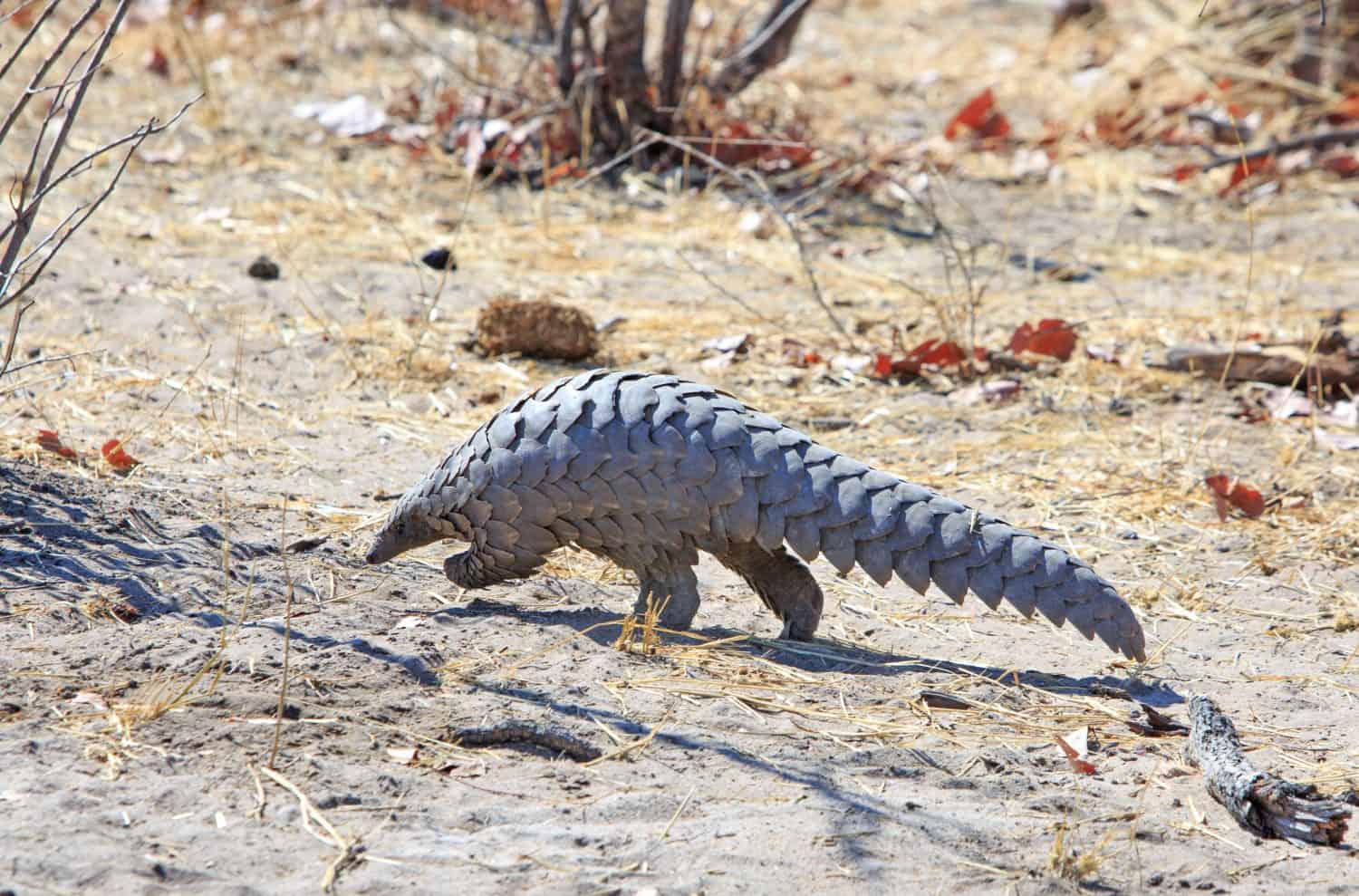
Pangolins look like what you would end up with if a dragon and an
anteater
had a baby.
©paula french/Shutterstock.com
Scientific Name
Manidae, In Africa the species are; black-bellied pangolin (Phataginus tetradactyla), white-bellied pangolin (Phataginus tricuspis), giant ground pangolin (Smutsia gigantea) and temminck’s ground pangolin (Smutsia temminckii). In Asia the species are; Philippine pangolin (Manis culionensis), Sunda pangolin (Manis javanica), Chinese pangolin (Manis pentadactyla), and the Indian pangolin (Manis crassicaudata).
Conservation Status
All of the species of pangolins are protected nationally and internationally, but two are also protected under the IUCN Red List of Threatened Species. China has increased their protection to include food and medicinal uses for their bodies, making it illegal to hunt them for any reason. Trafficking pangolins continues.
Appearance
They are strange-looking creatures that look like they walked out of a mythical animal book. Pangolins are covered in large brown or tan scales. They have long snouts like an anteater and also have similar tongues to the anteater to scoop ants and termites out of small holes and rotten wood. They have very large claws, which they use to dig up insects and rip open rotting wood. Their tongues can reach an impressive 10 inches long. They have very thick eyelids to protect their eyes from insect bites while they eat. These strange little beasts don’t have any teeth. Since the tail and rear legs are joined, the tail works as a third leg when the pangolin stands on its rear legs to reach insect nests. They have very poor sight and use their sense of smell to find food.
Size
They weigh 3.5 – 75 pounds and measure 12 – 39 inches long with a tail that is 10 – 28 inches long.
Habitat
Pangolins live in diverse environments, from rainforests to grasslands and arid deserts. One pangolin species even climbs trees. They use their massive claws to dig burrows if they are a terrestrial species. Some of the burrows are so large that a person could stand up in them. The arboreal pangolins, African black-bellied, and the Chinese pangolins live almost entirely in trees.
Diet
They eat termites, ants, crickets, bee larvae, earthworms, and other small insects, which they hunt for by scent at night. An adult pangolin can eat 70 million insects a year.
Lifespan
It is unknown, though some have lived for 20+ years in captivity.
Info
Pangolins are generally solitary creatures, although certain species have been observed living in pairs. They usually give birth to a single baby at a time, which they carry on their backs, similar to opossums until they are old enough and their scales become harder. When they are first born, and for a while, the young pangolins have soft scales and are unable to defend themselves. Once they are older, they can curl up into a ball, using their think scales as armor, which few can bite through. The only animals capable of biting through a pangolin’s scales are lions, tigers, leopards, and hyenas.
The World’s Most Trafficked Mammal: The Pangolin
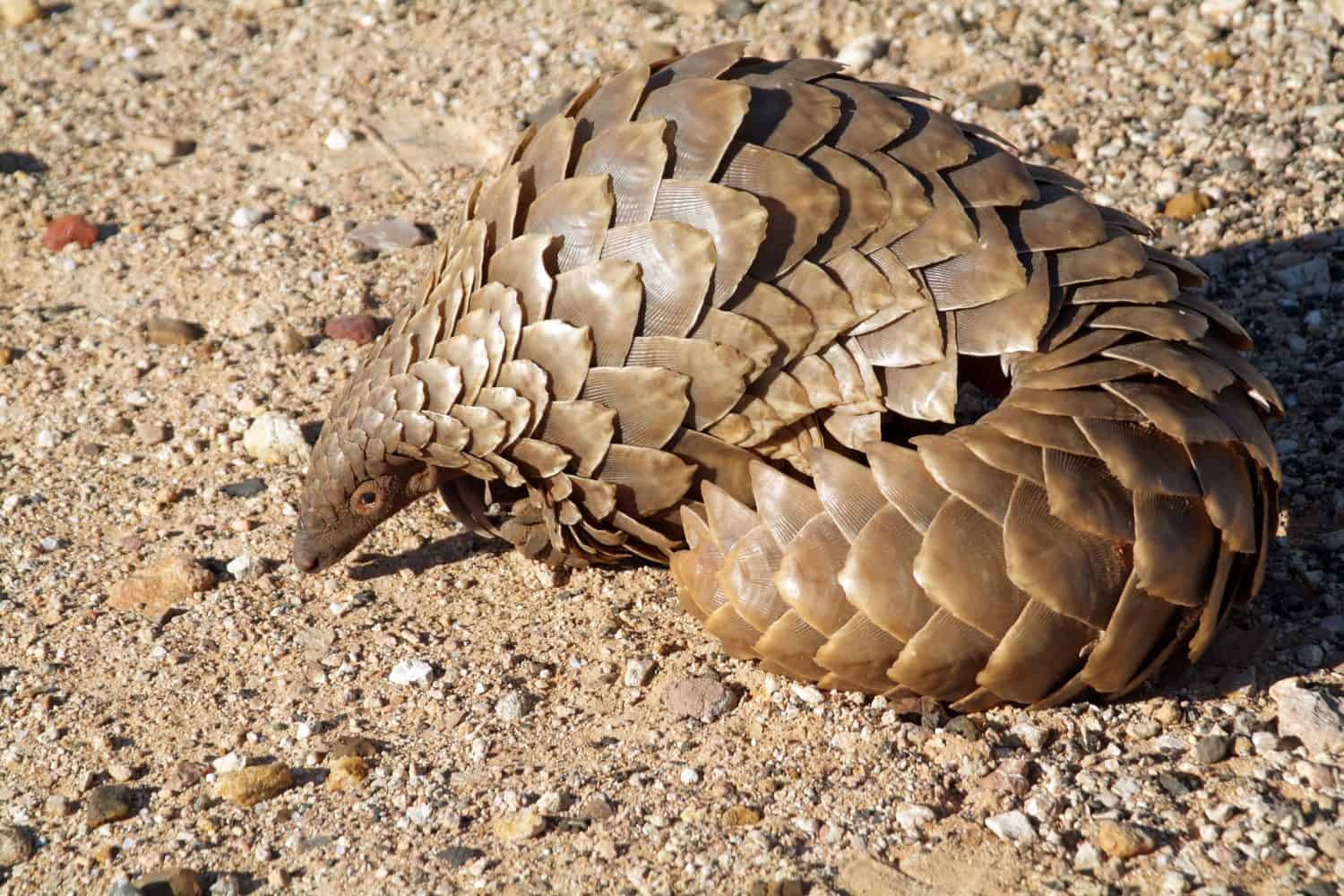
Pangolin scales are made of keratin, which is what our fingernails are made of.
©Peter Titmuss/Shutterstock.com
Pangolins don’t deserve the horrible treatment they’ve suffered at the hands of humans. They are the most trafficked mammals in the world.
Trending and Taboo Dishes
They are eaten whole as a delicacy in Vietnam and China. Even though China signed an agreement making the consumption and use of pangolins illegal, it’s still going on. It has become a popular and trending dish that the newly wealthy urbanites enjoy indulging in because it must be caught wild. It is confusing why they would focus on the extremely endangered Chinese pangolin and not choose to focus on overpopulated wildlife. Eating pangolin is taboo, like eating shark fin soup which makes it all the more desired by the elite. The pangolins that are severely affected by the hunting are the Chinese (Manis pentadactyla), Sunda (M. javanica), and Philippine pangolins (M. culionensis).
Since it is becoming harder to serve pangolin dishes in Asia, the poachers traffic the whole animal to other countries. There they can fetch higher prices than they could in Asia. In Africa, the pangolin is hunted as a wild animal and marketed locally instead of relying on international trade.
Bogus Medicinal Uses
Another way the pangolins are used is for “medicine.” It is said that eating pangolin scales aids indigestion and gas, boosts lactation, and reduces swelling in those consuming it. Sadly, an animal close to extinction should be used for false medicinal claims when plenty of real medicines exist for small-time ailments.
Pangolins are Not Boots
Pangolin skin is harvested to make luxury purses and boots. There is no end to human greed. It must stop before these rare and peaceful animals are gone for good. Poaching is a very real issue with many types of animals. Even with laws in place, the poachers focus on the money they will make off the pangolin’s life. They tend to brush off any threat that could exist from the law. Even if they are caught, it’s not likely they would be harshly punished if they are punished at all. There could be fines in place but if it’s less than the amount they’ll make off the pangolins, it’s not going to be a big deal. Since 2008, the trade has taken off with trafficking taking place between Africa into Asia. Due to this, the pangolins are listed now as critically endangered.
Saving the Pangolin
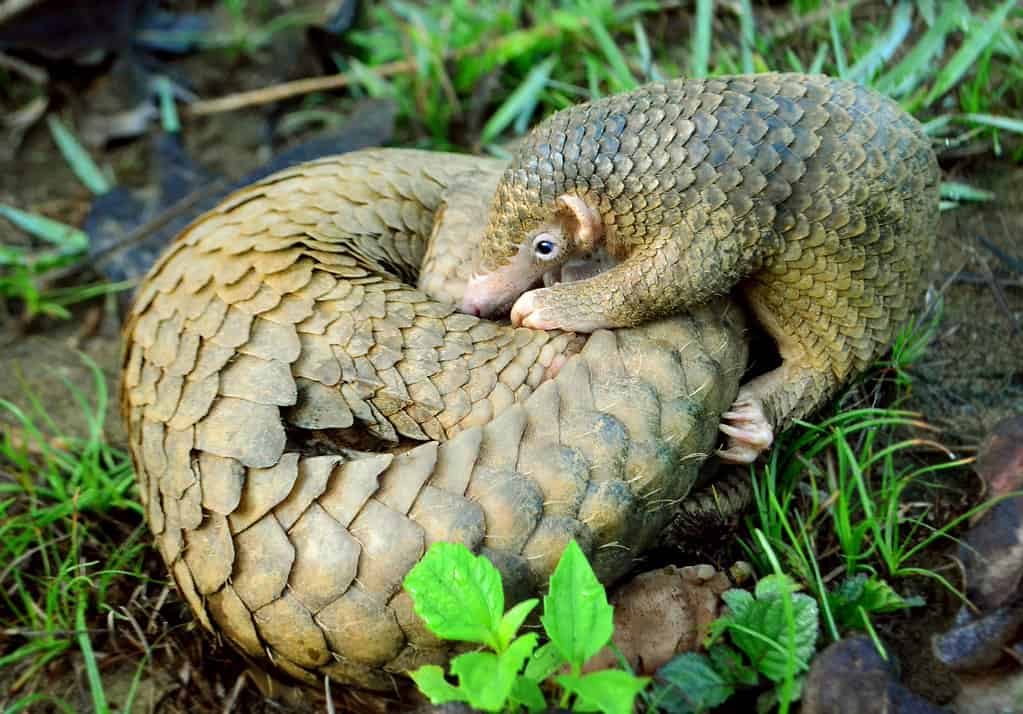
Baby pangolins, like the one pictured above, are fully dependent on their mothers until they are two years old.
Pangolins are endangered with several species listed as critically endangered. The numbers in the wild are not known but extinction is imminent. To save the pangolins from extinction, groups have formed to spread awareness on the issue. They are doing what they can to save the few that are left. The World Wildlife Federation, TRAFFIC, Save Pangolins with support from the Wildlife Conservation Network, World Sustainability Organization’s Friend of the Earth program, the Environmental Investigation Agency, and many more are doing what they can to save the rare animals from extinction. They have partnered to create the Coalition to End Wildlife Trafficking Online.
Though many groups have formed and large companies are becoming educated on pangolin trafficking and how to report it, it is still ongoing. You can also help by notifying the correct agencies if you find companies responsible for trafficking, serving, or selling pangolins or their body parts. Simply submit a form to the Coalition to End Wildlife Trafficking.
Other ways to help include adopting a pangolin to sponsor, donating money to one of the groups working hard to educate people on the destruction of the pangolin species, or educating yourself and keeping up with the progress made by the organizations.
Pangolins are critical to the ecosystems they are found in. They keep the destruction of trees done by termites considerably lower. Trees are incredibly important to have a healthy ecosystem. Without pangolins, approximately 70 million insects per pangolin annually will be back in the environment. The result would be devasting to many lifeforms and vegetation. With pangolins extinct, there would be a serious and devastating chain reaction to the ecosystems they support through pest management.
Thank you for reading! Have some feedback for us? Contact the AZ Animals editorial team.

